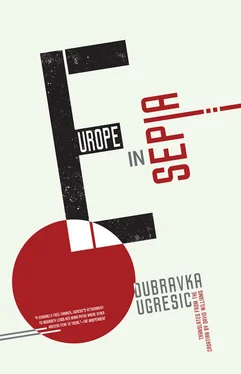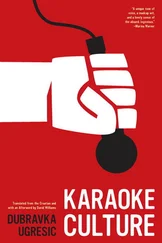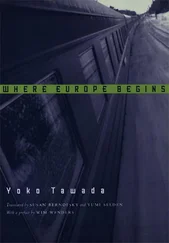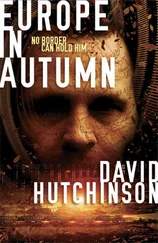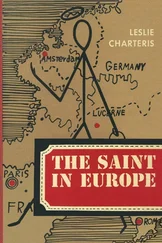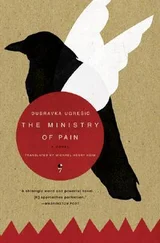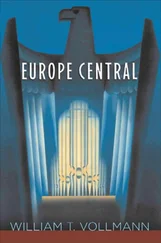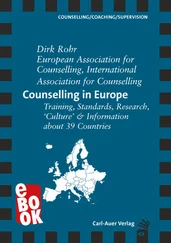Central, Eastern, Southeastern Europe. . It’s a landscape I know like the back of my hand. They were different in the time of communism; only the iconography was the same. Now it’s as if the fall of communism has felled the differences. I know how people here breathe, the way they hide themselves, playing dead like a fox in a fable, peasant cunning. They lower their gaze in conversation with outsiders, practiced in the art of restrained movement, answering every question with I don’t know —that I don’t know always accompanied by a wistful smile. They swallow the dumpling of betrayal on a daily basis, fret about making ends meet, walking on tiptoes to prevent a breach, as if expecting the dam to burst and the envisaged flood to sweep away all in its path. They don’t try planting flowers — gardening is a belief in the future, and they have no future. Peasant fatalism and moronic sayings are all that remain for them: A man needs a full belly and empty balls; we’ve always got by, we always will somehow . They huddle together, withdraw into their own shells, shrinking to their true dinky stature, only to then peddle this dinkiness as their chief virtue. They’re hawkers of cheap souvenirs, angel figurines everywhere, the Slovaks stealing them from the Poles, the Czechs from the Slovaks. Croats sell gingerbread hearts and bags of lavender. Few display any imagination — imagination doesn’t sell. They want UNESCO to protect their non-material resources; the Croats have already hocked off kulen and soparnik . 1Yes, they live off souvenirs, like European Indians in a European reservation. Honey cookies, gingerbread, a bit of folklore, embroidery and lacework, olive oil from handpicked olives, traditional local recipes. At the markets in Vienna these Indians (Serbs? Gypsies? Macedonians?) sell fake Roman coins and fibulas. Their squaws — women with bleached hair and faces roasted like Chinese smoked duck (sun beds are still in fashion) — are ragpickers, traders in “original fakes,” clothing, caps, and scarves. Everyone sells his or her bric-a-brac. Yes, the future is definitely elsewhere. In the time of communism watches sped ahead, now they go backwards. To bridge the time difference, today parents herd their kids toward Singapore, Australia, Hong Kong, and Asia. No, not to Western Europe — that’s all over. Sure, after the fall of the Wall everyone perked up a bit, breathed a sigh of relief, got comfy in their new statelets. But you have to pay to play, so some stole, others slaughtered, and others just enjoyed a little bum-rushing. In time their heels cooled and they bowed their heads, as if occupied by an invisible force. Now here they are, back where they always were. .
“And what do you want,” demurs my interlocutor, a Croat. Everyone has always walked all over us, and yes, we bowed our heads, shut our mouths, and divided into tribes. We Slavs are a sad people. We’ve never had, nor will we ever have, a Joyce or a Beckett. Do you know why? Because Vladimir and Estragon — that’s us. We’ve been waiting around for centuries for someone to come, to fall from the sky, waiting’s all we’ve ever done; we’re artists when it comes to waiting. Maybe that’s why, unlike others, we’ve never conquered or subjugated anyone. They’ve conquered us. Our rebellion is small beer. All we do is get drunk, smash our heads against the wall, and maybe slit our veins with broken glass from the floor. What did we inherit from the ancient Slavs? The art of breathing under water. Breathing through a reed — our authentic Slavic innovation. We’ve never been ambitious. Vienna, you say? We don’t care about Vienna, and neither do the Slovaks. Bratislava wants to be Linz, Zagreb to be Graz or Trieste, that’s the reach of our ambition. Yes, we’re endangered like Indians, hence our efforts to protect what remains: language, a little mythology, a few ancient handicrafts. Our differences are small beer too: Some of us pray to the god of rain, others to the god of sun, some do their ganga , 2others blow their penny whistles. We regularly summon our ghosts, excavating our ancestors’ bones. We count for nothing, we don’t produce anything, nor do we have the money to buy anything. We are neither producers nor consumers; no one needs us, not even our own kids.
A racing pulse — tachycardia — fatigue — nausea — anxiety — crisis. The rules of etiquette didn’t prevent me fleeing Bratislava before time was called. Once home (in Croatia, in Zagreb? No, in the Netherlands, in Amsterdam!) I quickly forgot my two-day “Slovak” episode. I deleted everything. Only two pictures managed to sneak into my internal album. The tiny sculpture of Maria Theresa on horseback twinkling opaquely in the November fog, and the petite woman with the beautiful face, a child’s mittens drawn over tiny burnt hands. The two aren’t necessarily a diptych, but both are in sepia.
Brought on by a fresh incident, here “at home” a new anxiety attack soon runs me down. Geert Wilders’ party, the PVV, or Partij voor de Vrijheid, launches a website cordially inviting Dutch citizens to have their say on burning questions ( Do you have problems with recent arrivals from Central and Eastern Europe? Have you lost your job because of a Pole, Bulgarian, Romanian, or some other East European? ). The website is visited by tens of thousands of people giving vent to their resentment at the legal presence of Central, East, and Southern European immigrants. Poles, especially the Poles. Because it’s the Poles who are taking their jobs. Poles steal, get drunk, they’re loud and liable to criminal behavior. Poles are “human trash.”
There’s no reason for alarm. I’m not a Pole; for now I still pass as a Croat with a Dutch passport. The ex-Yugoslav and Bulgarian in me I’ll easily hush up. I’ll freeze like a fox in a fable until this storm, too, passes. I diligently pay my taxes to this water-soaked country. The damp doesn’t bother me; we, we Slavs, are used to forests and trees, leaves and oaks, water and wetlands. My memes are active, they remember the old Slavic art of breathing underwater. Maybe my anxiety attack is just a tempest in a teacup. It seems that way. For now. Until some new storm rolls in. And then everything will depend on that final drop of water, and in which direction the flood surges.

1 Kulen is a spicy pork and red pepper sausage, soparnik an ancient Croatian dish from the Poljica region of Dalmatia, a kind of chard pie dating from before the Ottoman invasions.
2 Ganga is a dissonant form of singing — or moreover, wailing — traditional in rural Croatia and Bosnia-Herzogovina, often performed by men standing in a circle with interlocked arms.
1.
Pigeons are crazy about public sculptures. For a pigeon there’s no greater happiness than perching on the head of a sculpture and taking a dump. Sculptures are for people to consecrate, and pigeons to desecrate. The truth is that for some reason people are crazy about public sculptures too.
In December of last year, unidentified vandals attacked a sculpture of Marija Jurić Zagorka, a Croatian journalist and novelist. Zagorka’s literary production never got its due during her lifetime, nor for many years after her death. Had it not been for the efforts of the Zagreb Center for Women’s Studies — which, inter alia, had a statue erected in her honor in downtown Zagreb — her work would today be forgotten. The vandals sawed off the bronze umbrella on which the bronze authoress stood leaning in repose, the Center for Women’s Studies whipped up a media frenzy, and the city fathers promptly committed to appropriating funds for a new umbrella. Appalled by the ugly incident, the next day many Zagreb residents laid old umbrellas at the statue’s feet. There you go, that’s canonization for you!
Читать дальше
